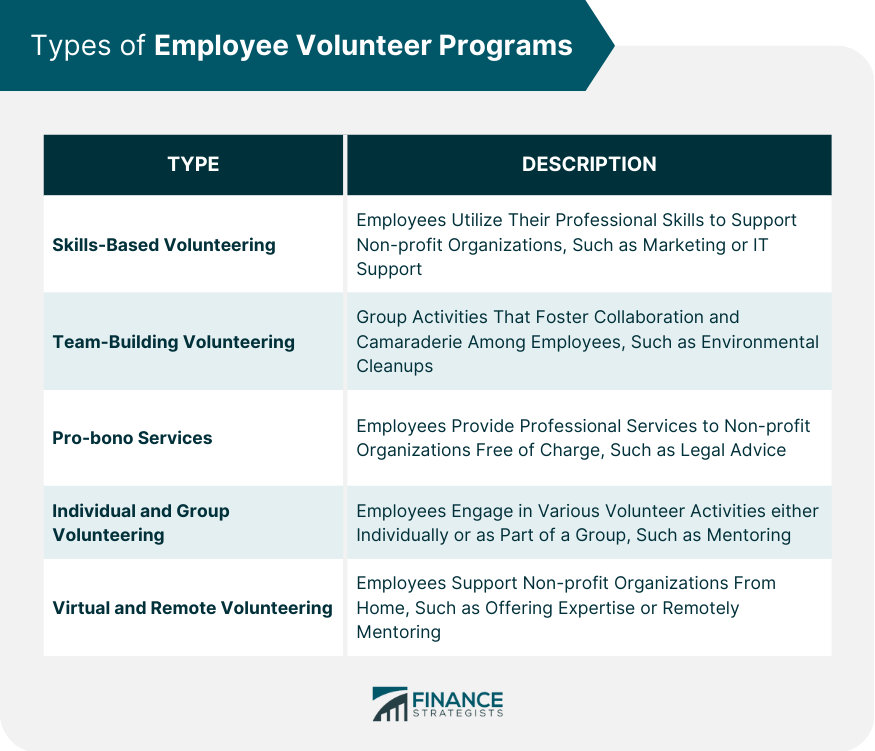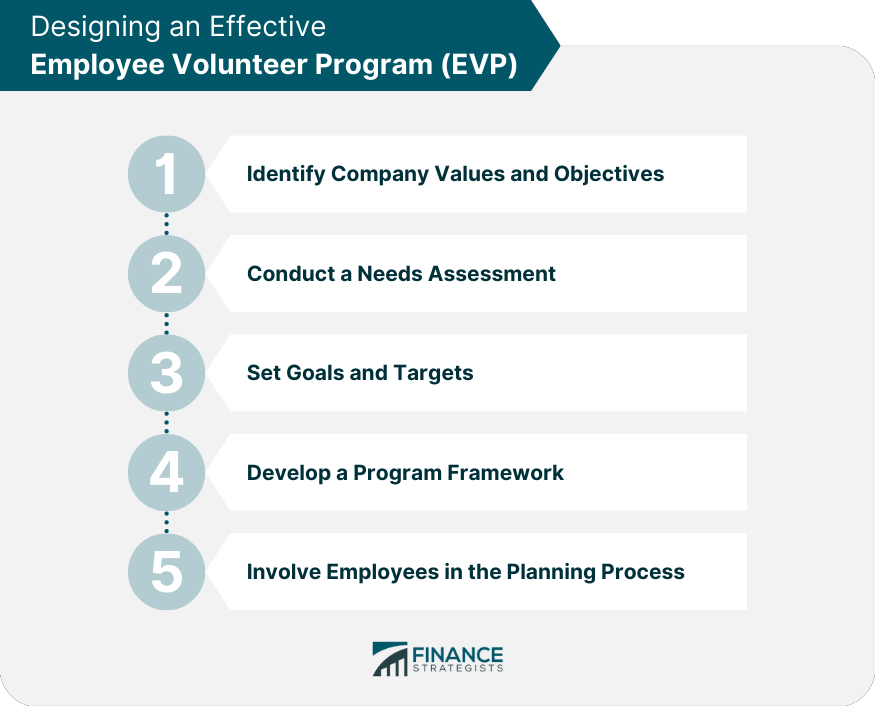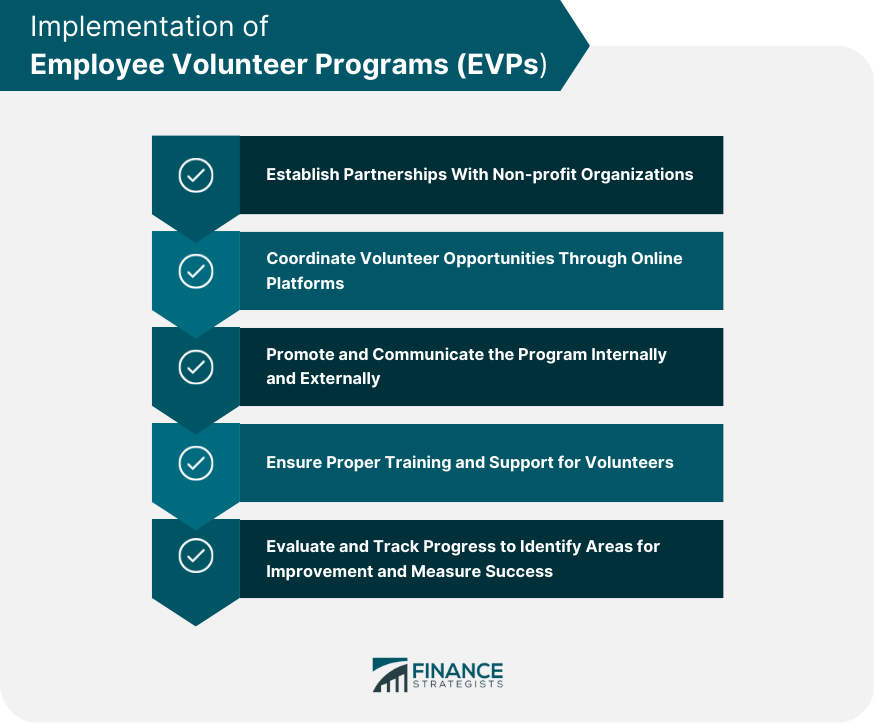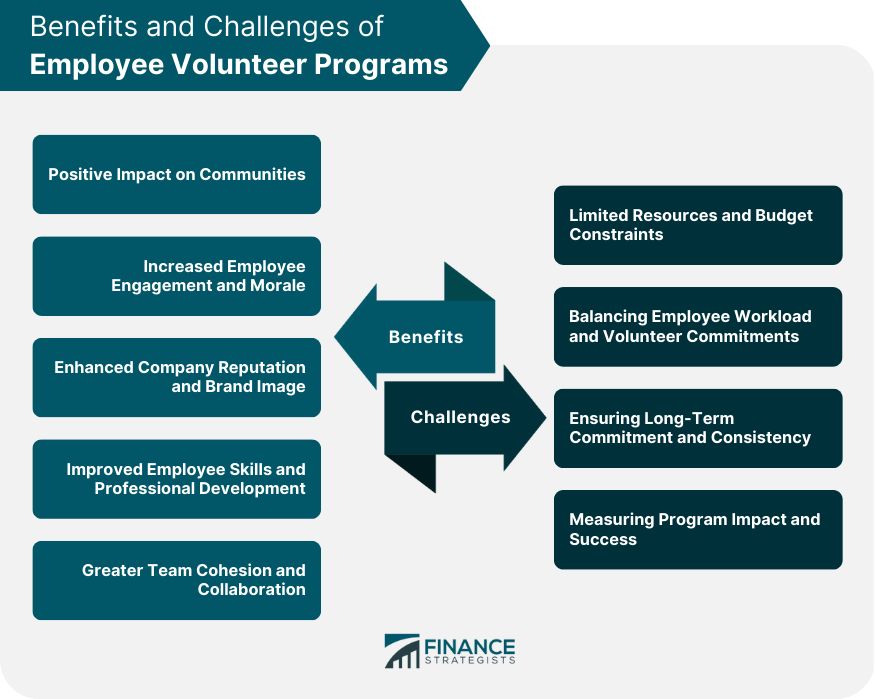What Are Employee Volunteer Programs (EVPs)?
Employee volunteer programs (EVPs) have become an increasingly popular method for businesses to promote corporate social responsibility and boost employee engagement.
These programs offer employees the opportunity to participate in various volunteering activities, which can help them develop new skills, strengthen relationships, and give back to their communities.
Types of Employee Volunteer Programs
Employee volunteer programs can take various forms, catering to specific company goals and employee preferences.
By offering a diverse range of options, businesses can ensure that all employees have the opportunity to engage in meaningful volunteer work.
Skills-Based Volunteering
This type of EVP allows employees to utilize their professional skills to support non-profit organizations. Skills-based volunteering can include activities such as marketing, financial planning, IT support, or strategic consulting.
Team-Building Volunteering
Team-building volunteering focuses on group activities that foster collaboration and camaraderie among employees. These activities could include environmental cleanups, home-building projects, or meal preparation for the less fortunate.
Pro-bono Services
Pro-bono volunteering involves employees providing professional services to non-profit organizations free of charge. Examples include lawyers offering legal advice or graphic designers creating promotional materials for charities.
Individual and Group Volunteering
This category of EVPs allows employees to engage in various volunteer activities either individually or as part of a group. These activities can range from mentoring youth to participating in fundraising events.
Virtual and Remote Volunteering
With the rise of remote work and technology, virtual volunteering has become more popular. Employees can support non-profit organizations from the comfort of their homes by offering expertise, participating in online fundraising events, or even remotely tutoring and mentoring.

Designing an Effective Employee Volunteer Program (EVP)
Creating a successful EVP requires careful planning, collaboration, and communication. By following a systematic approach, businesses can design a program that aligns with their values and objectives.
Step 1 Identifying Company Values and Objectives
The first step in designing an EVP is to identify the company's core values and objectives. This will help ensure the program aligns with the organization's mission and contributes to its overall goals.
Step 2 Conducting a Needs Assessment
A needs assessment can help businesses identify the specific community issues and non-profit organizations that align with their values and objectives. This can involve conducting research, surveying employees, or consulting with community leaders and experts.
Step 3 Setting Goals and Targets
Developing clear goals and targets for the EVP is essential in guiding the program's direction and measuring its success. Goals can include the number of volunteer hours, the impact on the community, or employee skills development.
Step 4 Developing a Program Framework
A comprehensive framework should outline the types of volunteer activities, the resources required, the roles and responsibilities of employees and management, and the methods for tracking and evaluating progress.
Step 5 Involving Employees in the Planning Process
Encouraging employee input during the planning process can help create a sense of ownership and enthusiasm for the program. Employees can provide valuable insights into their preferences, skills, and areas of interest, which can help shape the program's design.

Implementation of Employee Volunteer Programs (EVPs)
Once the planning phase is complete, businesses must focus on implementing the EVP and ensuring its success.
Establishing Partnerships With Non-profit Organizations
Forming strategic partnerships with non-profit organizations is crucial for a successful EVP. These partnerships can provide employees with the necessary volunteer opportunities, resources, and support.
Coordinating Volunteer Opportunities
Effective coordination of volunteer opportunities involves ensuring that employees have access to a range of options that align with their interests and skills. This can include creating an online platform or database where employees can browse and sign up for available opportunities.
Promoting and Communicating the Program
Promoting the EVP internally and externally is essential for its success. Internal promotion can involve newsletters, intranet postings, or employee meetings. External promotion can include press releases, social media, or partnering with non-profit organizations to spread the word.
Ensuring Proper Training and Support for Volunteers
Providing training and support for employee volunteers is crucial for their success and satisfaction. This can include orientation sessions, skill-building workshops, or access to resources and guidance from non-profit partners.
Evaluating and Tracking Progress
Regular evaluation and tracking of the program's progress are essential for identifying areas for improvement and measuring success. This can involve monitoring volunteer hours, conducting surveys to gauge employee satisfaction, or assessing the impact on the community.

Benefits of Employee Volunteer Programs
Employee volunteer programs offer a wide range of benefits for both businesses and their employees.
Positive Impact on Communities
EVPs can significantly impact local communities by addressing social, economic, or environmental issues. Employees can help improve the lives of individuals in need or contribute to the well-being of the environment.
Increased Employee Engagement and Morale
Volunteering can boost employee engagement and morale by providing a sense of purpose and accomplishment. Participating in volunteer activities can also strengthen relationships among coworkers and foster a positive work culture.
Enhanced Company Reputation and Brand Image
An effective EVP can improve a company's reputation and brand image by demonstrating its commitment to corporate social responsibility. This can lead to increased customer loyalty, positive media coverage, and a competitive edge in the market.
Improved Employee Skills and Professional Development
Employee volunteer programs can offer opportunities for employees to develop new skills and enhance their professional growth. Volunteering can help employees develop leadership, communication, problem-solving, and teamwork skills.
Greater Team Cohesion and Collaboration
Team-building volunteer activities can strengthen collaboration and cohesion among employees. By working together toward a common goal, employees can forge stronger relationships and improve their ability to work together in a professional setting.
Challenges and Obstacles in Implementing Employee Volunteer Programs
While EVPs offer numerous benefits, businesses may also face challenges and obstacles in implementing these programs.
Limited Resources and Budget Constraints
Implementing an EVP may require financial resources, personnel, and time. Companies need to allocate sufficient resources to ensure the program's success without negatively impacting their core business operations.
Balancing Employee Workload and Volunteer Commitments
Employees may struggle to balance their work responsibilities with their volunteer commitments. Businesses must find ways to support their employees in managing their workloads while providing opportunities for volunteering.
Ensuring Long-Term Commitment and Consistency
Maintaining employee enthusiasm and commitment to the EVP can be challenging over time. Companies need to continuously promote the program, recognize employee contributions, and refresh the available volunteer opportunities to ensure long-term engagement.
Measuring Program Impact and Success
Quantifying the impact of an EVP on the community and the company can be challenging. Developing clear metrics and evaluation methods is crucial for understanding the program's success and identifying areas for improvement.

Final Thoughts
Employee volunteer programs play a significant role in promoting corporate social responsibility and fostering a positive corporate culture.
By offering employees the opportunity to give back to their communities, businesses can create a sense of purpose and fulfillment among their workforce while benefiting their communities.
As more companies recognize the value of EVPs, it is crucial to implement best practices and learn from successful examples to create engaging and impactful volunteer programs.
In addition to implementing employee volunteer programs, companies can further demonstrate their commitment to corporate social responsibility by partnering with wealth management services that prioritize socially responsible investing.
By aligning financial strategies with ethical and sustainable principles, businesses can significantly impact society and the environment.
Employee Volunteer Programs (EVPs) FAQs
Employee Volunteer Programs (EVPs) are programs offered by businesses that allow employees to participate in various volunteering activities, which can help them develop new skills, strengthen relationships, and give back to their communities. EVPs offer benefits such as a positive impact on communities, increased employee engagement and morale, enhanced company reputation and brand image, improved employee skills and professional development, and greater team cohesion and collaboration.
Employee Volunteer Programs can take on various forms, including Skills-Based Volunteering, Team-Building Volunteering, Pro-Bono Services, Individual and Group Volunteering, and Virtual and Remote Volunteering.
Implementing EVPs may face challenges such as limited resources and budget constraints, balancing employee workload and volunteer commitments, ensuring long-term commitment and consistency, and measuring program impact and success.
Designing and implementing a successful EVP involves identifying company values and objectives, conducting a needs assessment, setting goals and targets, developing a program framework, involving employees in the planning process, establishing partnerships with non-profit organizations, coordinating volunteer opportunities, promoting and communicating the program, ensuring proper training and support for volunteers, and evaluating and tracking progress.
Employee volunteer programs offer a range of benefits for businesses and employees, including positive impacts on communities, increased employee engagement and morale, enhanced company reputation and brand image, improved employee skills and professional development, and greater team cohesion and collaboration.
True Tamplin is a published author, public speaker, CEO of UpDigital, and founder of Finance Strategists.
True is a Certified Educator in Personal Finance (CEPF®), author of The Handy Financial Ratios Guide, a member of the Society for Advancing Business Editing and Writing, contributes to his financial education site, Finance Strategists, and has spoken to various financial communities such as the CFA Institute, as well as university students like his Alma mater, Biola University, where he received a bachelor of science in business and data analytics.
To learn more about True, visit his personal website or view his author profiles on Amazon, Nasdaq and Forbes.











